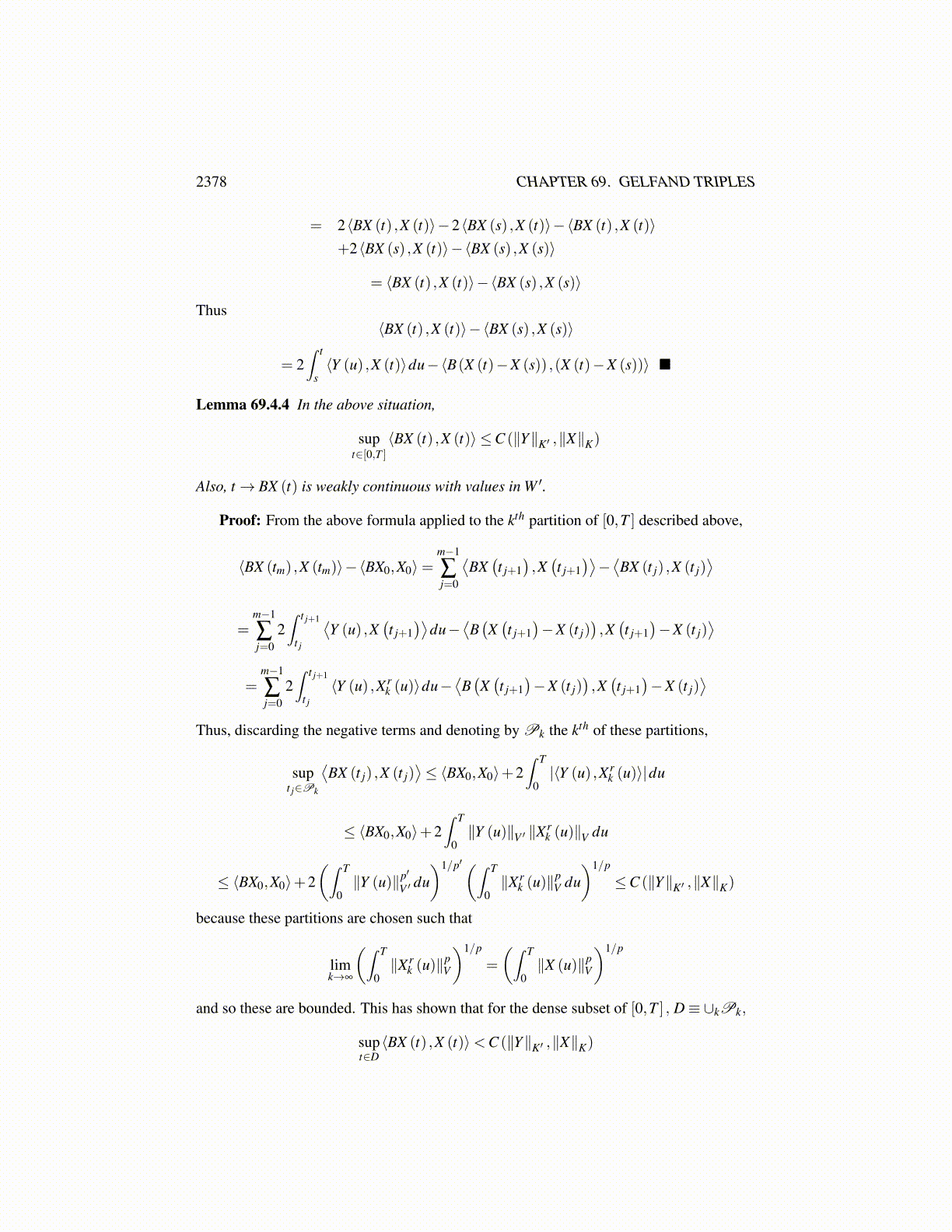
2378 CHAPTER 69. GELFAND TRIPLES
It follows that∞
∑i=1⟨Bx,ei⟩Bei (69.4.21)
converges in W ′ because it was just shown that∥∥∥∥∥ q
∑i=p⟨Bx,ei⟩Bei
∥∥∥∥∥W ′≤
(q
∑i=p|⟨Bx,ei⟩|2
)1/2
∥B∥1/2
and it was shown above that ∑∞i=1 |⟨Bx,ei⟩|2 < ∞, so the partial sums of the series 69.4.21
are a Cauchy sequence in W ′. Also, the above estimate shows that for ∥y∥= 1,∣∣∣∣∣⟨
∞
∑i=1⟨Bx,ei⟩Bei,y
⟩∣∣∣∣∣ ≤(
∞
∑i=1|⟨By,ei⟩|2
)1/2(∞
∑i=1|⟨Bx,ei⟩|2
)1/2
≤
(∞
∑i=1|⟨Bx,ei⟩|2
)1/2
∥B∥1/2
and so ∥∥∥∥∥ ∞
∑i=1⟨Bx,ei⟩Bei
∥∥∥∥∥W ′≤
(∞
∑i=1|⟨Bx,ei⟩|2
)1/2
∥B∥1/2 (69.4.22)
Now for x arbitrary, let xk ∈ span({
g j}∞
j=1
)and xk→ x in W. Then for a fixed k large
enough, ∥∥∥∥∥Bx−∞
∑i=1⟨Bx,ei⟩Bei
∥∥∥∥∥≤ ∥Bx−Bxk∥
+
∥∥∥∥∥Bxk−∞
∑i=1⟨Bxk,ei⟩Bei
∥∥∥∥∥+∥∥∥∥∥ ∞
∑i=1⟨Bxk,ei⟩Bei−
∞
∑i=1⟨Bx,ei⟩Bei
∥∥∥∥∥≤ ε +
∥∥∥∥∥ ∞
∑i=1⟨B(xk− x) ,ei⟩Bei
∥∥∥∥∥ ,the term ∥∥∥∥∥Bxk−
∞
∑i=1⟨Bxk,ei⟩Bei
∥∥∥∥∥equaling 0 by 69.4.19. From 69.4.22 and 69.4.20,
≤ ε +∥B∥1/2
(∞
∑i=1|⟨B(xk− x) ,ei⟩|2
)1/2
≤ ε +∥B∥1/2 ⟨B(xk− x) ,xk− x⟩1/2 < 2ε